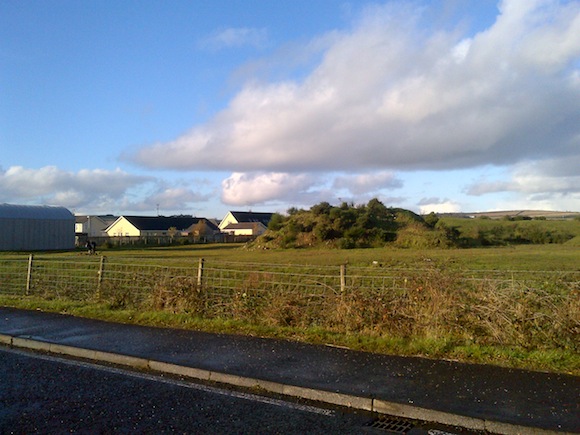 Exclusive: RESIDENTS of a housing estate where tonnes of cancer-causing chemicals were dumped have called for a proper investigation, believing the dump is responsible for a large number of illnesses in the area.
Exclusive: RESIDENTS of a housing estate where tonnes of cancer-causing chemicals were dumped have called for a proper investigation, believing the dump is responsible for a large number of illnesses in the area.
The scandal of how the British Oxygen Company (BOC) allowed the dumping of hundreds of tonnes of Naptha tar in rural districts of the Derry City Council area has NEVER been investigated by any arm of officialdom.
The BOC plant operated in the 70s and 80s to provide gas power to DuPont.
Part of the process led to a tarry waste which was taken away by the lorry load.
But Derry Daily understands that at least eight sites in rural districts were used for dumping of the waste. It was done, apparently, all legally due to the lack of controls at the time.
The naptha tar is a soup of chemicals linked to a range of illnesses by medical experts including cancer and attacks on the body’s central nervous system.
One of the sites is at a former bogland at the Flough, on the outskirts of Lettershandoney.
Despite concerns over the years – and the building of Oghill Park housing development on part of the bog – not a single official, environment agency or indeed a single politician has bothered to raise the issue.
Residents are sensitive to the families of a number of deceased individuals – and of others who are now suffering from various illnesses.
“But there are just 150 houses in Lettershandoney and there seems, on the face of it, to be an extraordinarily high number of people who have suffered from various illnesses over the years,” said one resident.
For the first time a lorry driver employed to dump the tar has spoken about what happened at the site beside Lettershandoney (pictured above where horses were grazing yesterday).
He told Derry Daily: “It was just a job to us; we didn’t think at the time.
“I would get a call to go to BOC and fill up and we’d take it to the hill at the Flough just beside Lettershandoney and the tar would pour out.
“We had to get it when it was hot before it hardened up. When we were dumping it would flow out fast at the beginning but more slowly towards the end as it turned thick and sticky.
“I’d be called out up to four times a day for months at at time. We would also take the tar to Leitir Moss, which is a couple of miles away. By the time we had finished it looked like an American oil well. The place was swimming in it.”
The driver is backing calls for an investigation by the Department of the Environment.
“It’s just disgraceful,” he admitted.
“I was just doing a job, but now of course with all these illnesses around here, I find it devastating.”
The tar has had top soil poured on top in recent years, but it still lies there in hundreds of tonnes.
Children who used to walk through the area as a short cut to a local shop would often play with the mixture.
“This is 2013 and there must be an investigation,” said one worried mother yesterday.
“If they find that there was no health hazard after an investigation, then that would be fine. But it needs investigated now.”
BOC insists they were not legally responsible for the dumping.
They failed to answer questions as to whether they were morally responsible.
Tags:





